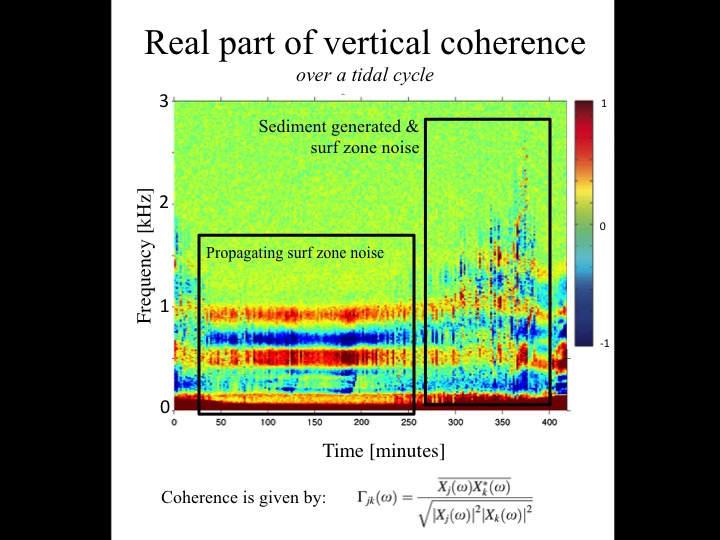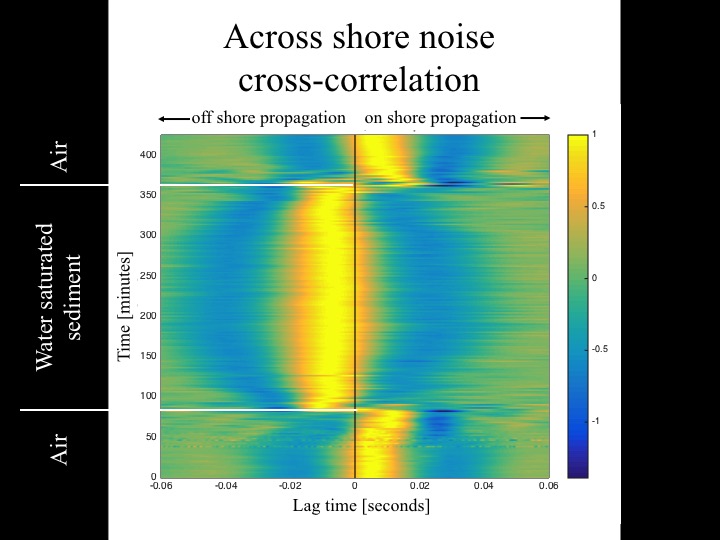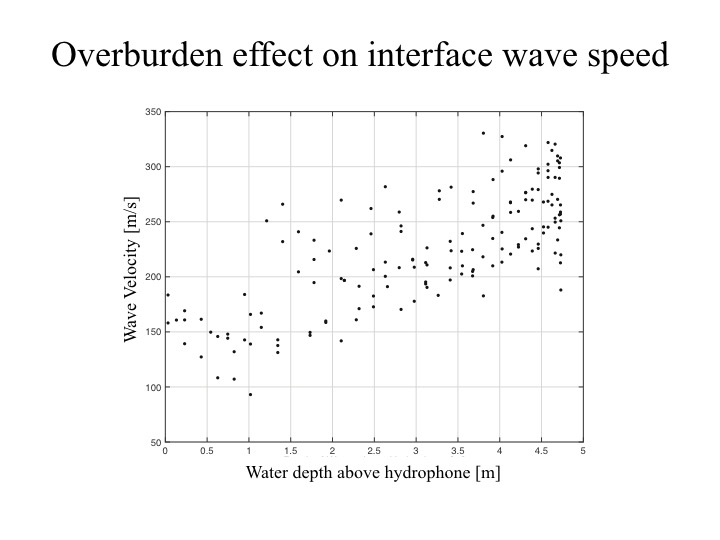A low-cost method for measuring bedload transport is passive acoustics. However, in regions of high surf zone energy, delicate hydrophones can be easily damaged by plunging breakers and flotsam. This study uses pairs of buried hydrophones in the seabed to measure bedload transport and to infer bulk acoustic properties of the sediment such as sound speed and attenuation.

Wave energy makes long term monitoring from water borne instruments in the surf zone impossible. One solution is to deploy the sensors in the seabed itself.

The spectrogram taken from a buried hydrophone at Advocate Beach, NS, show two mechanisms driving the noise field: the noise generated by crashing waves propagating down the beach when the tide is high, and the sediment generated noise when the tide is directly over the buried sensors.

The cross-correlation of the noise on an across-shore pair of hydrophones allows the compressional sound speed in the sediment to be estimated as a function of tide height, or overburden pressure caused by the water depth above the seabed.

The Bay of Fundy's large tides provide a natural laboratory to study this relationship, showing that for ~1/2 an atmosphere of overburden pressure, the sound speed increases by a factor of 2.